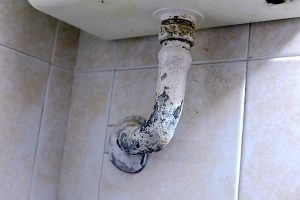Every home should be a safe place to live, but extra thought and care should be given to those with challenges, whether it is an elder person or someone who is disabled. Falls can be detrimental (even life threatening) to elders. Seniors can be fearful and less independent if they need care while recuperating. They can lose confidence and the ability to live independently. Below are a few statistics on falls reported by the Center for Disease Control and Prevention (CDC).
• More than one third of adults 65 and older fall each year in the United States.
• Among older adults, falls are the leading cause of injury deaths. They are also the most common cause of nonfatal injuries and hospital admissions for trauma.
• Over 16,000 people 65 and older die from injuries related to accidental falls; about 1.8 million people 65 and older were treated in emergency departments for nonfatal injuries from falls, and more than 433,000 of these patients were hospitalized.
• The rates of fall-related deaths among older adults rose significantly over the past decade.
The following are tips to help prevent falls, not just for elders but for the whole family.
Carpeting
Navigating a wheelchair or walker can be difficult if carpet is too thick. Carpeting in the home should be low profile with padding no more than 3/8 inch thick.
Do not use throw rugs if the room has hardwood floors.
Doors
Doors should be wide enough for a wheelchair or walker. Whenever possible, doors should swing out and away from the frame.
Stairs
Stairs should have handrails, no carpet, non-skid treads, adequate lighting, chair lift
Shower
Walk in shower with non-skid surface and grab bars, shower seat and long handle shower extension.
Bath tubs
Attach a secure tub bar clamp to the side of the tub
Install a tub transfer bench
Install grab bars that are secured to studs. Do not use grab bars with suction cups.
Toilets
Various toilet seat risers are one option for low toilets, but these are sometimes less convenient than replacing them with the ADA standard 17-19 inch seat height toilet commonly available.
Shelves
Shelves can be out of reach in some homes so look for storage space and cabinets that are more easily accessible. Lazy Susan are built into some corner cabinets. Another resource would be a suction tip reacher to retrieve items that are out of reach.
Refrigerator
A side-by-side refrigerator is more convenient to use for someone who has a walker, cane or wheelchair. Attach a basket to the walker for an extra precaution.
Stoves
Electric stoves are safer for people who are aging. They often lose their sense of smell or lean into the stove and catch their clothes on fire.
Smoke detectors and Carbon Monoxide detectors on every level of the home. Preference given to wired in to avoid having to rely on batteries.
Phones in both kitchen and bedroom.
GFCI ground fault electrical outlets in bathrooms, kitchen, outdoor areas to prevent electrical shock.
Ramps A 1:12 incline is preferred, but 1:10 incline is acceptable in some instances. (Every one inch of height requires 10 or 12 inches of length.) The steeper pitch of 1:10 makes it more difficult to go up quickly and down slowly, and is more effort for the person who has to push the wheelchair.
It is important, that we as a community watch for situations in our homes, or in the homes of our loved ones that are not safe. Acti-Kare Responsive In-Home Care is a locally owned company that specializes in providing professional and highly individualized non-medical services to help seniors maintain their independence and dignity while still receiving the assistance they require.
In addition to helping you realize potential dangers in your home, Acti-Kare can also make recommendations of companies that specialize in making homes more safe and accessible for seniors. For more information on creating a safer environment, please visit our web site at www.actikare.com, or call and speak to Paul or Heidi Williams at our Fayetteville location, 770-461-7881.












Leave a Comment
You must be logged in to post a comment.